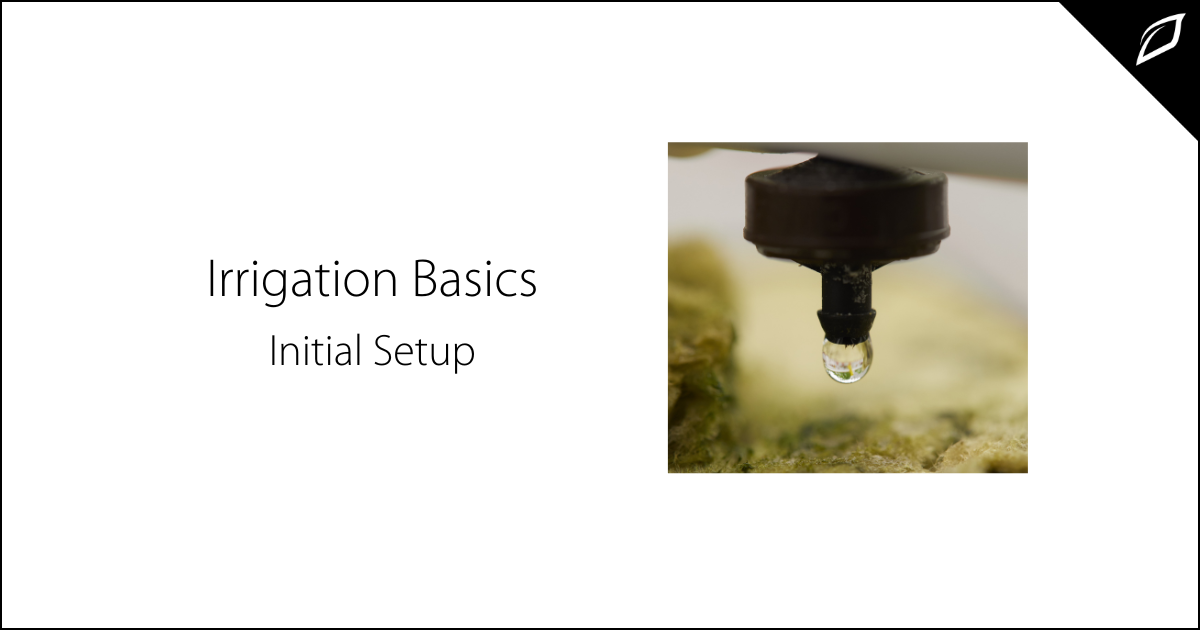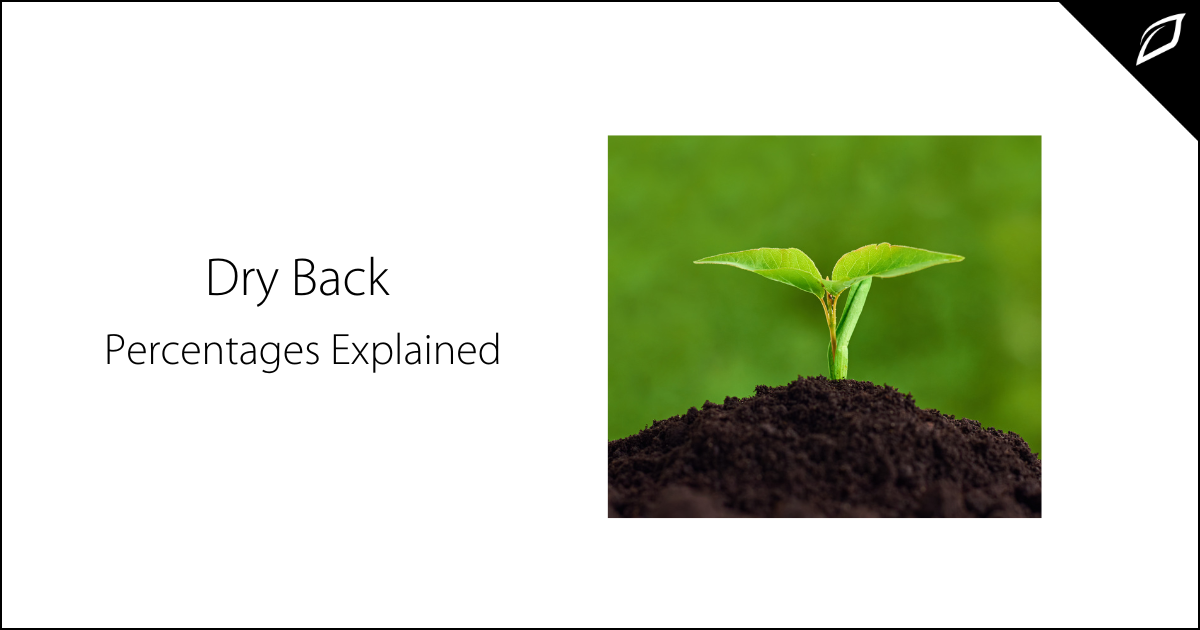Dry Back Percentages Explained
We are often asked, “What dry back percentage should I shoot for?” Unfortunately, there is no one size fits all solution to this question. Let’s go...
2 min read
.png) Marcus Baldinger
:
Aug 8, 2022 9:02:41 AM
Marcus Baldinger
:
Aug 8, 2022 9:02:41 AM

Picture this; you’ve built out your indoor grow room or vertical farm to perfection and loaded in multiple different genetics that you’ve been dying to get your hands on. After a few weeks, you notice that most of your plants are doing great except for one finicky cultivar. It just doesn’t seem to be drinking the same amount as all the others. Because your whole room was designed to feed all at once using a single valve, it’s getting overwatered daily.
You know what the problem is, but you can’t fix it without sacrificing the health of the rest of your room due to the irrigation setup. This exact scenario has likely happened to all of us at least once during our growing career. As a result, many have learned that having multiple irrigation zones is the way to go. But how many are truly optimal?
The short answer is as: many as possible! Ideally, you would want to deploy one valve per row or ‘zone.’ Individually controlling when each zone gets fed will allow you to cater the irrigation events to that specific cultivar, thus avoiding the issue completely. Even if you are running a monocrop in your room, having a valve attached to each zone will allow you to address inevitable microclimate-induced over/underwatering. For example, if the airflow on the left side of your room is greater than on the right side, chances are the substrates on that side of the room will dry out faster, even if they are the exact same cultivar.
Microclimates can form in any number of spaces throughout a grow room and is especially true when utilizing multi-tiered vertical racking, as racks and lighting can impede proper airflow. Substrate monitoring probes can help to notify you of where these microclimates may be based on the substrates’ water content data. But, you would be severely limited on what you could do to address the issues without having complete control over each zone’s valves.
Now that we’ve covered why having more valves gives you the most control over your grow let’s look at how to manage all those valves. First things first, you need data to act from, specifically from your substrate. Growlink’s TDR Probes actively report and log substrate water content, EC, and temperature data every few seconds. We typically recommend one probe per 100sqft of canopy space or around one probe for every 25-30ft of benching. If your rows are longer than this, having 2 – 3 probes spaced evenly throughout the zone can provide insight into where your microclimates may lie. If using multiple probes in a single zone, you have the option to report the average of all probes, in addition to seeing them individually. This is especially useful when setting up your irrigation rules.
With each zone now using its own valve and substrate monitoring probes to tell us what is going on in the root zone, all that’s left is figuring out where the feeds will be coming from. Traditionally, you have two options: Batch Tanks or Direct Injection. Direct Injection refers to a feed sourced from a Fertigation system that injects individual nutrient parts at set ratios into the water flowing through it and sends it directly to the plants. This helps save both cost and space when compared to utilizing batch tanks. Since Fertigation systems can only feed one recipe at a time, it is important to consider your irrigation timing when using Direct Injection so you don’t end up trying to feed different recipes across multiple rooms at the same time.
Batch tanks typically refer to holding tanks that store a premixed nutrient solution and deliver it directly to your plants whenever valves are opened, usually with the assistance of an on-demand pressure pump. While they take up more space compared to Direct Injection, they offer the ultimate versatility and redundancy when setting up your irrigation events. Having one batch tank per room allows multiple rooms to feed different recipes simultaneously. This method even allows for on-demand feedings, which are necessary when using our Automated Crop Steering Program.
Whether you’re using Growlink’s Fertigation system or not, we’ve got you covered. We offer the ability to control as many valves as you can fit in your room, all from the same platform that collects and monitors your substrate data, truly making your irrigation setup a breeze.


We are often asked, “What dry back percentage should I shoot for?” Unfortunately, there is no one size fits all solution to this question. Let’s go...

The US cannabis industry has become one of the fastest growing markets, with an overall increase in sales of 29.9 billion USD from 2015-2022. This...
.png)
Cannabis Irrigation Supply is a family-owned and operated irrigation design firm and retailer. With over 35 years of experience in the drip...